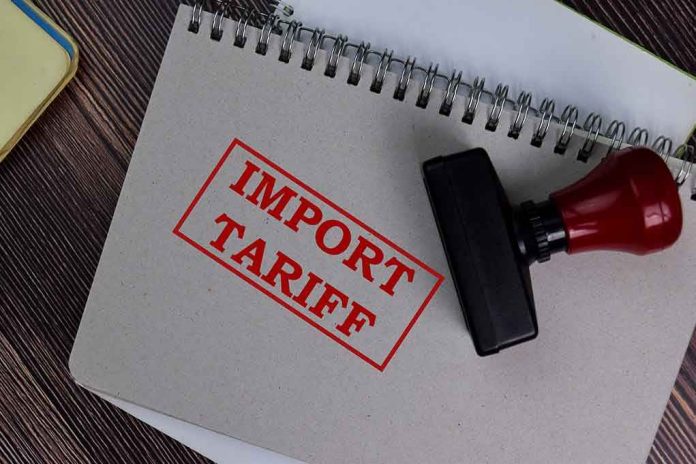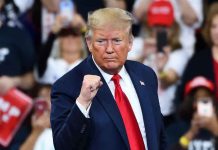
President Trump’s hardball trade deadline is barreling toward America’s biggest trading partners, and the political establishment is sweating bullets—because for once, the U.S. is refusing to blink first.
At a Glance
- Trump’s 90-day tariff freeze ends July 9, with new tariffs looming if no deals are reached
- Major trading partners—including Canada, the EU, and China—are scrambling to avoid sweeping duties
- The administration is openly confronting digital services taxes and so-called “overseas extortion”
- Industry leaders warn of inflation, supply chain chaos, and retaliation if talks fail
Trump’s Tariff Showdown: The Clock Runs Out
President Trump’s administration, never one for subtlety, set a 90-day timer on a new round of tariffs back in April—what he called “Liberation Day.” Well, the countdown is nearly over. On July 9, the freeze expires, and Trump is letting the world know: play ball on his terms or brace for a tariff tsunami starting August 1. This isn’t some empty threat or diplomatic theater. The White House has already inked new deals with China, the UK, and Vietnam. For holdouts like Canada and the EU, the message is clear—pony up, or pay up.
Trump’s deadline isn’t just a negotiating tactic—it’s a direct shot across the bow of globalist bureaucrats who’ve gotten fat off America’s patience and open markets. The U.S. is finally confronting digital services taxes, with Canada’s new 3% DST prompting an immediate threat of reciprocal tariffs. Letters warning of imminent duties go out July 7, so our trading “partners” can’t claim they didn’t see this coming. For years, American businesses have bled jobs and innovation thanks to lopsided trade deals. Trump’s message? Those days are over. We are not the world’s doormat.
Allies or Adversaries? Lines in the Sand
The administration isn’t shy about calling out the culprits. Canada, the EU, China, the UK, Vietnam—all are in the crosshairs. The U.S. market is the global prize, and Trump’s team knows it. If you want access, you play by America’s rules. The EU has delayed its own retaliatory tariffs until July 9, matching Trump’s deadline, but don’t let the diplomatic posturing fool you. Behind closed doors, their negotiators are sweating. Trump’s willingness to go it alone has shattered the old alliance playbook—no more endless summits, no more “global consensus” nonsense.
Traditional business interests and left-leaning pundits are wringing their hands over possible price hikes and market volatility. They say consumers will pay more; they say this could spark another round of retaliatory tariffs. But let’s inject some common sense: who do you trust to defend your paycheck and your country’s sovereignty—career diplomats, or a president who actually understands leverage?
Winners, Losers, and the Road Ahead
Trump’s approach is a calculated risk, but let’s be honest—what’s the alternative? More of the same “free trade” shell game that’s gutted American manufacturing, rewarded foreign cheaters, and left working families to foot the bill? The administration’s hard stance has already forced concessions from major players. Small businesses and industry groups are bracing for short-term pain, but there’s no long-term prosperity without a level playing field.
Economists—many of whom never met a globalist deal they didn’t like—are warning about inflation and disruptions. But the reality is, unchecked trade deficits and foreign taxes on American companies have been bleeding us dry for decades. Trump’s tariffs are a wake-up call. If foreign governments want to profit from our market, they’d better stop extorting our innovators and respect American law. For far too long, DC insiders have prioritized cocktail party diplomacy over defending U.S. interests. This administration is drawing a line that’s long overdue.
Sources:
Holland & Knight trade law analysis





